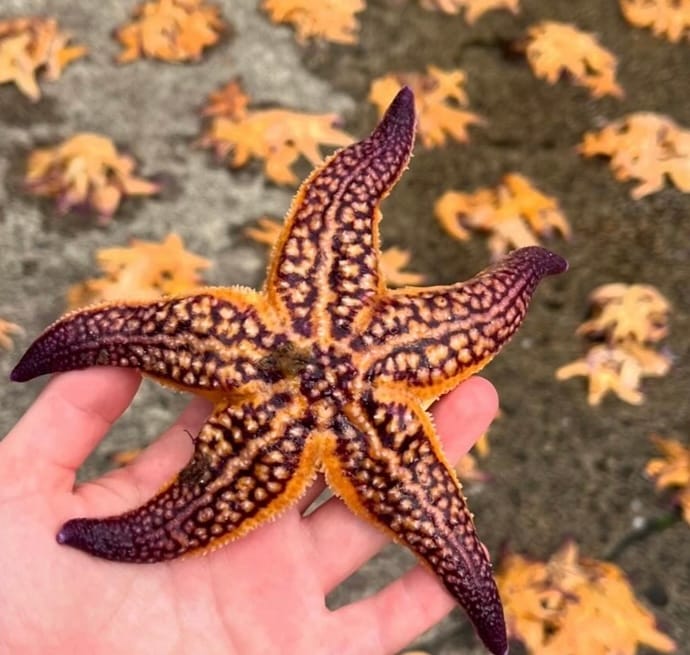A Marine Mili series: When is a star not a good sign?
Let's talk about the Northern Pacific sea-star, a very invasive species of sea star.

Welcome to the Marine Mili series, a regular column about all things marine! During this series I aim to inspire people to want to protect our oceans and all the marine life that call our oceans home. Hopefully after reading each column, you would have learnt something new including what we can do to help protect and preserve our oceans. You can follow me and my journey on my Instagram page: _marine_mili.
Did you know that Northern Pacific sea-stars are a very invasive species of sea star? Did you know they are also known as one of Australia’s most destructive marine pests?
This species is an aggressive predator to native and commercial species including shellfish, small fish, crabs and almost any other small invertebrate they can get their arms around.
Northern Pacific sea-stars harm biodiversity, aquaculture and fisheries, which could largely damage the food chain. Northern Pacific sea-stars are also believed to be one of the factors that caused a crash in the spotted hand fish population.
One of the main reasons they target hand fish is because they lay their eggs on the sea floor making them an easy meal for a hungry sea star. Currently there are thought to be less than 3000 spotted hand fish left.
When they are fully grown, Northern Pacific sea-stars can be up to 50cm in diameter, and have five arms with pointed upturns on each arm.

They can range in colour from yellow to orange and purple; adult stars are usually yellow and orange with purple markings, whereas juveniles are slightly more purple. Females can hold and produce up to 20 million eggs per year.
These stars can also establish large populations quickly as their fertilised eggs become larvae, which floats with the currents, allowing them to colonise new places easily. There is a large and well-known population in Port Phillip Bay.
Otherwise, these stars usually live in bays, estuaries and reefs from the high tide mark of 200 metres, as well as on piers, docks and ports. Many marine organisations conduct invasive species cleanups, as this species is invasive and damaging our ecosystems.
However, this does not mean that all sea-stars are bad, as many other species are very important for our ecosystems.
I had participated in an invasive species cleanup with a marine organisation that has a permit from the government which grants permission to remove these sea stars. I learnt a lot about them and just how destructive they are during this experience.
If you ever spot one of these destructive stars, report it to Agriculture Victoria through their online reporting system. Here you can report any marine pest sightings or unusual marine species.
Or you can call the Agriculture Victoria Customer Service Centre on 136 186.





